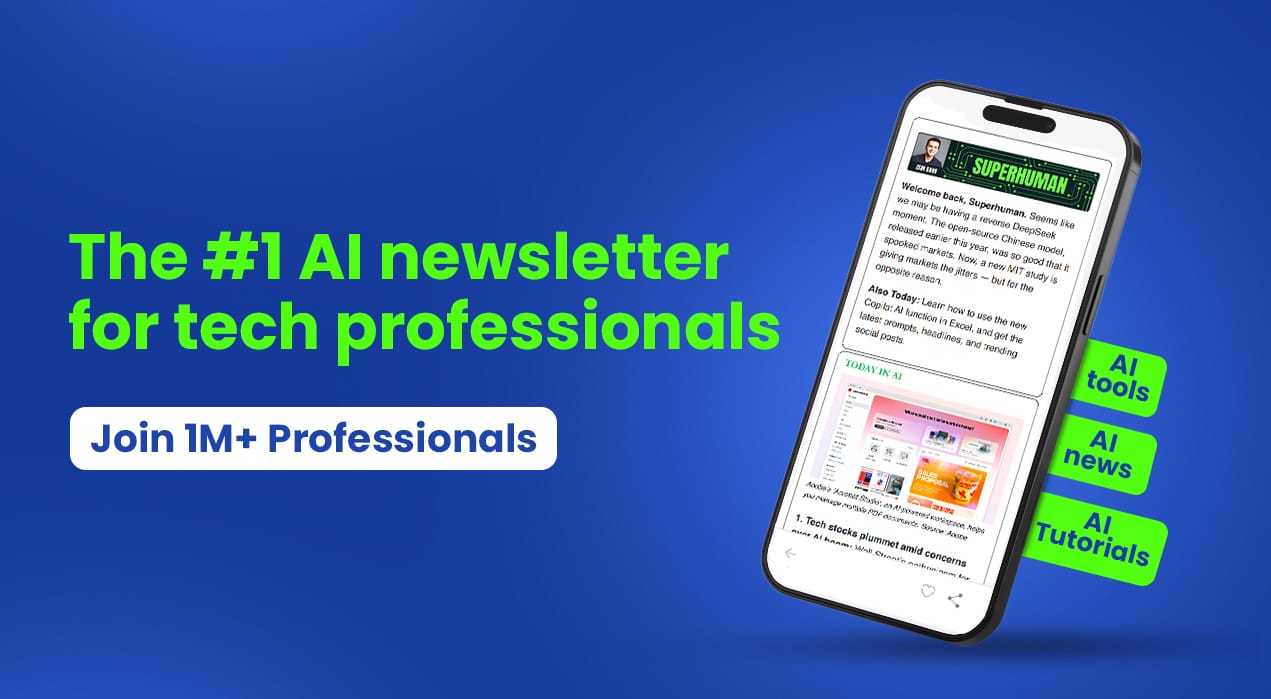- Technology Insights Daily
- Posts
- The M5 Ultra will land in Mac Studio in 2026
The M5 Ultra will land in Mac Studio in 2026
Become the go-to AI expert in 30 days
AI keeps coming up at work, but you still don't get it?
That's exactly why 1M+ professionals working at Google, Meta, and OpenAI read Superhuman AI daily.
Here's what you get:
Daily AI news that matters for your career - Filtered from 1000s of sources so you know what affects your industry.
Step-by-step tutorials you can use immediately - Real prompts and workflows that solve actual business problems.
New AI tools tested and reviewed - We try everything to deliver tools that drive real results.
All in just 3 minutes a day
Every morning, before the world fully wakes, I sit with a cup of coffee and sift through hundreds of tech updates — searching for the few that truly matter. TechnologyInsightsDaily grew from that quiet ritual. It’s my way of turning chaos into clarity, and sharing the breakthroughs that spark ideas or solve real problems.
Today’s issue comes from those early hours of curiosity and focus. Let’s dive into the tech shaping tomorrow.
According to recent reports, Apple plans to deploy the M5 Ultra chip in the next-generation Mac Studio sometime in 2026. The Ultra variant has traditionally been Apple’s most powerful silicon tier, designed for high-end creative workflows and workstation users. By bringing M5 Ultra to Mac Studio, Apple appears to be doubling down on delivering “Ultra” level performance in a desktop form-factor rather than purely in a Mac Pro. In practice this means professional users—video editors, 3D artists, large-scale AI developers—could get even more cores, memory bandwidth and unified RAM than before. While the exterior design may largely stay the same, the internal boost could be significant. If you’re in a creative production environment, this machine could become the go-to workstation next year.
Google AI Mode is now deeply integrated into Google Chrome, empowering users with an “agentic” assistant capable of handling real-world tasks like booking appointments or event tickets. For instance, instead of merely surfacing information, the browser-based AI can navigate websites, compare availability, and redirect to booking flows on your behalf. This signifies a major shift from passive search to active task automation within the browser. Google describes the update as the biggest in Chrome’s history, and it underlines a broader move toward smart agents embedded in everyday applications. For users, this means fewer manual clicks and less toggling between tabs. For developers and privacy watchers, it raises new questions about control, data-flow, and the boundaries between browsing and acting.
In a significant strategic move, Apple is reportedly close to finalising a deal worth around US $1 billion with Google to integrate a customised version of Google’s Gemini AI model into Apple’s voice assistant, Siri. The aim is to dramatically boost Siri’s abilities — enabling deeper reasoning, follow-up contextual discussions, and more advanced integration with Apple ecosystem apps. Apple has lagged behind competitors in conversational intelligence; leveraging Google’s large-scale model is a fast-track solution while Apple refines its own internal AI efforts. This partnership highlights how even major tech rivals can collaborate in an AI arms-race. For users, it suggests that future iPhones and Apple devices may offer far more capable voice interactions. For the industry, it signals a consolidation of AI-model sourcing strategy among major platform providers.
A landmark decision by the High Court of England and Wales found that the AI model Stable Diffusion is not an “infringing copy” under UK copyright law because it does not store or reproduce copyrighted works within its model weights. Although the photographic agency Getty Images alleged that millions of its images were used without permission, the court held the main copyright claims failed. Some limited trademark infringements were upheld, but the core AI-training claim was dismissed. This ruling offers some relief to AI developers but leaves open broader questions about AI training, jurisdiction, and rights-holder protections. Creators still face challenges in enforcing rights globally when models are trained overseas. For the emerging tech and creative industries, it marks a pivotal legal milestone in how generative AI is treated under intellectual-property frameworks.
With the arrival of iOS 26, Apple has introduced a long-requested setting for AirPods users: “Keep Audio with Headphones,” which prevents the iPhone from automatically switching audio to other Bluetooth devices (like car speakers) when your AirPods are connected. Up until now, users often found their music or calls abruptly transferred to a different speaker when another paired device connected. This new toggle gives users control over whether their AirPods remain the primary output even when other devices join. From a user experience standpoint, this is a meaningful quality-of-life upgrade for headphone users frustrated by errant audio switching. It shows Apple’s focus on user-pain points and subtle refinements in the broader iOS ecosystem.
Thanks for reading today’s edition. I hope something here sparked insight, eased your workflow, or simply gave you a moment of inspiration. Writing this newsletter is a meaningful part of my day, and knowing it reaches someone like you keeps it alive.
If this issue helped you, please forward it to a friend, share it, or refer someone who loves tech. Small actions like these help this space grow and keep me discovering fresh insights for you every day.
See you tomorrow — stay curious, stay inspired.






